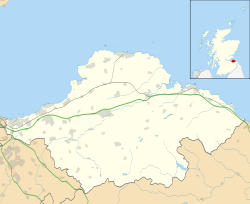| Greywalls | |
|---|---|
 South façade of Greywalls | |
| Location | Gullane, East Lothian, Scotland, United Kingdom |
| Coordinates | 56°02′32″N2°49′10″W / 56.0422°N 2.8194°W |
| Built | 1901 |
| Built for | Alfred Lyttelton |
| Architect | Sir Edwin Lutyens |
Listed Building – Category A | |
| Designated | 5 February 1971 |
| Reference no. | LB1337 |
| Official name | Grey Walls (High Walls) |
| Designated | 1 July 1987 |
| Reference no. | GDL00204 |
Greywalls is an Edwardian country house at Gullane in East Lothian, Scotland. It was built in 1901 for Alfred Lyttelton, to designs by Sir Edwin Lutyens. It has been run as a hotel since 1948. Greywalls is protected as a category A listed building, [1] and the grounds are included on the Inventory of Gardens and Designed Landscapes in Scotland, the national listing of significant gardens. [2]

